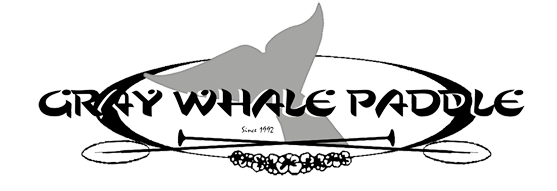[vc_row full_width=”stretch_row” css=”.vc_custom_1500655828696{background-color: #ffffff !important;}”][vc_column][ultimate_heading main_heading=”Kaholo SUP series” main_heading_color=”#000000″ main_heading_font_size=”desktop:27px;”][/ultimate_heading][/vc_column][/vc_row][vc_row full_width=”stretch_row” equal_height=”yes” content_placement=”top” css=”.vc_custom_1500655862523{background-color: #ffffff !important;}”][vc_column width=”1/2″][vc_single_image image=”39″ img_size=”full” alignment=”center”][/vc_column][vc_column width=”1/2″][vc_column_text]The Kaholo series Stand Up Paddleboards (SUPs) are designed for cruising, touring, fitness and recreational racing. They are a combination hull; displacement type at the nose, transitioning to a flat, planing type hull about 1/3 of the way back, like virtually all boards in this touring/racing category. Typical of this style of board, they are sized at 12’6” and 14’, the two common racing classes; there are currently three models. They were originally designed as twin fins for navigating shallow water, kelp and weed, but are available with a single fin box in place of the permanently attached twin fins. (see below) It is our opinion that the twin fins offer the best overall performance, and are the most versatile. The new Kaholo Nui is a larger 14’ board for the big guys, or those who want to fish, expedition, or take out the kid/s and/or dog/s! The Kaholo series SUPs were designed and created as a partnership between Gray Whale Paddle (GWP) in California and Chesapeake Light Craft (CLC) in Maryland.[/vc_column_text][ultimate_heading main_heading=”Specifications:” main_heading_color=”#000000″ main_heading_font_size=”desktop:22px;”][/ultimate_heading][vc_column_text]
Kaholo 12-6
Length 12’6” Width 29 ¾ “(deck)/28” (hull chine) Weight 28-32#
Paddler size – Up to 150# for all paddlers: Up to 200# for advanced paddlers
Kaholo 14
Length 14’ Width 29 ½”(deck)/27 ½”(hull chine) Weight 32-36#
Paddler size – 150-220# for all paddlers: Up to 240#+ for advanced paddlers
Kaholo Nui
Length 14’ Width 34”(deck)/32” (hull chine) Weight 38-44#
Paddler size depends on usage. For recreational paddling, cruising and exercise, from about 220# to over 300#. For fishing or expedition use, a wide range of weights, up to about 250#.[/vc_column_text][/vc_column][/vc_row][vc_row full_width=”stretch_row” css=”.vc_custom_1500584264016{background-color: #ffffff !important;}”][vc_column][vc_column_text]Note: All board dimensions are approximate, as there can be slight variations when building; this is especially true for board weights. Also, paddler size data are guidelines only, but the guidelines should help optimize performance. [/vc_column_text][/vc_column][/vc_row][vc_row full_width=”stretch_row” css=”.vc_custom_1500584264016{background-color: #ffffff !important;}”][vc_column width=”1/2″][vc_column_text]
[/vc_column_text][/vc_column][vc_column width=”1/2″][vc_single_image image=”96″ img_size=”450×518″ alignment=”center”][ult_buttons btn_title=”Order directly from CLC” btn_link=”url:http%3A%2F%2Fwww.clcboats.com%2Fshop%2Fboats%2Fsurf_boats%2Fkaholo-stand-up-paddleboard.html||target:%20_blank|” btn_align=”ubtn-center” btn_size=”ubtn-large” btn_title_color=”#ffffff” btn_bg_color=”#e88c01″ icon=”Defaults-shopping-cart” icon_size=”25″ btn_icon_pos=”ubtn-sep-icon-top-push” btn_font_size=”desktop:20px;”][/vc_column][/vc_row][vc_row][vc_column][vc_separator][ultimate_heading main_heading=”Kaholo Fin Setup” main_heading_color=”#000000″ main_heading_font_size=”desktop:27px;”]The Theory Behind SUP Twin-Fins[/ultimate_heading][vc_empty_space][vc_column_text]The Kaholo series wood SUP kits were designed as a twin-fin board although a single-fin box is available as an option. This article is to clarify why the Kaholo series was designed as a twin-fin and some (not necessarily all) of the advantages the twin-fin setup provides. People who ask why this is a twin-fin, or express that they want the board as single-fin, probably aren’t completely aware of the reasons for the twin-fin. Following is a short list of the twin-fin advantages:[/vc_column_text][vc_column_text]
- The twin-fin allows easy paddling in kelp, weed or exploring shallows; much less chance of fin damage or a face-plant!
- The twin-fins allow the paddler more board control and allow a certain amount of edge turning (like a kayak), whereas the single-fin will (generally, depending on the fin) track harder/straighter. Beginners often like the harder tracking, but as a paddler becomes more proficient, they will appreciate the greater control with the twin-fins!
- In steep side seas, one of the twin-fins (which is very close to the rail) will always be in the water, improving control in those difficult conditions.
- Twin-fins are lighter by about 1 ½+ pounds as compared to a single fin in a box. This is largely due to the inner structure to hold the box, and the substantial weight of the single fin itself.
- From a practical perspective, twin-fin boards can be laid on the ground deck-up when gearing up for a paddle; a single-fin deck-up on the ground is VERY vulnerable to fin damage or, more importantly, hull damage! If, due to a single-fin setup, the board is set down hull-up, you also risk damaging the breather. NOTE: We don’t recommend any type of screw-in/out breather, as you will risk forgetting (been there/done that) having it open on the water or closed on the beach; both bad scenarios! We also don’t recommend the common SUP Gore-Tex type breathers as they will not allow enough air flow in and out of the hollow board to avoid risking board damage due to pressure!
- I have paddled and raced the Kaholo 14 for many years, in most all conditions, from confused seas, side seas, wind storms, downwind races, etc., and the twin fin is my go-to in every condition, in spite of having a single-fin board available!
[/vc_column_text][vc_column_text]Hopefully this information will clarify why the Kaholo was designed as a twin-fin, and the advantages of the design versus the more traditional single-fin. Interestingly, some of the traditional SUP industry is starting to look at the twin-fin design.[/vc_column_text][/vc_column][/vc_row]
